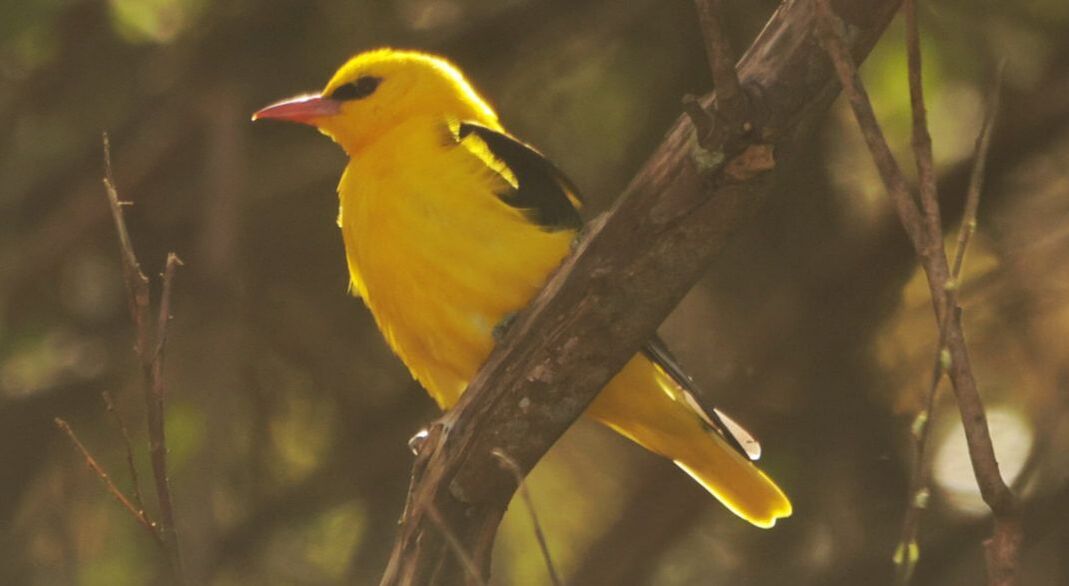|
The vivid yellow male Golden Oriole must be among the most highly-prized birds to find in Britain. One in Holyhead’s Breakwater Country Park on Saturday was a popular draw for local birders, since migrants have a reputation for not staying long. Small numbers used to breed in East Anglia, but they are now birds of mainland Europe, common in deciduous woodland where summer temperatures are high and rainfall low.
The one-day visitor was part of a weekend influx, 16 recorded between Friday and Monday, almost all in southwest Britain; but the Golden Oriole in Holyhead was the only one north of Gower. More than 130 have been seen in North Wales since the first confirmed record in Ruthin in 1870. Only one on Bardsey on 11 April 1981 was earlier in the season, since the majority are found in May and June. Greater numbers of common summer visitors arrived in recent days, with more than 200 each of Blackcap and Willow Warbler last Saturday on Bardsey, where a Nightingale has been present for four days and a Corncrake was the first ringed at the Bird Observatory since 2015. Whinchats and Wood Warblers are back on their breeding sites, and the first Garden Warbler was at Cwm-y-glo, near Llyn Padarn, on Friday. Winter birds are shipping out, with Redwings reported in several places, including birds likely to be Icelandic breeders. A dozen Waxwings on a Brymbo housing estate may prove to be the last of the winter. Ospreys at Cors Dyfi got down to egg-laying at the weekend, while last year’s female at Llyn Brenig appears to have been replaced; the regular male mated with a three-year old female that hatched in Scotland and was released in Dorset in 2021. Meanwhile, a female (KS1) that hatched beside the Afon Glaslyn in 2018 has returned to the Yorkshire Dales where she has bred since 2022. January’s RSPB Big Garden Birdwatch results, released last week, showed House Sparrow retaining top spot, but Blue Tit overtook Starling as the second commonest species, with numbers of the latter down 18% in just one year. Great Tits also did well, up from eighth to fifth place, but eight of the top 10 species were seen in fewer gardens than in 2023. Full details are on the RSPB website.
2 Comments
Jon Budworth
18/4/2024 11:19:18
Hi,
Reply
Bob Johnson
11/5/2024 12:10:02
Golden Oriole came up on Merlin this afternoon in my daughter's garden at Buckly, Flintshire.
Reply
Leave a Reply. |
Bird notesA weekly update of bird sightings and news from North Wales, published in The Daily Post every Thursday. Archives
July 2024
Categories |

 RSS Feed
RSS Feed
